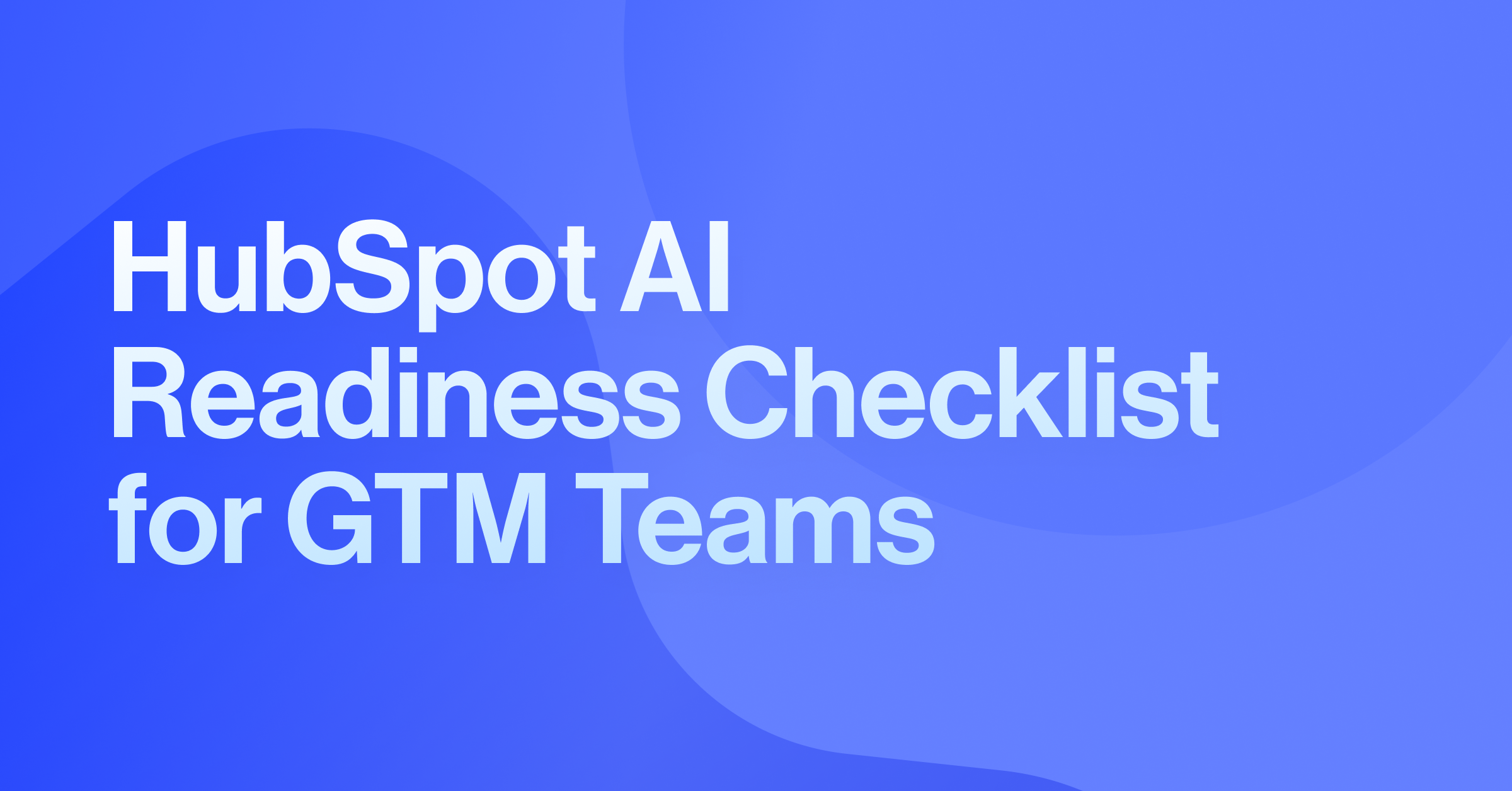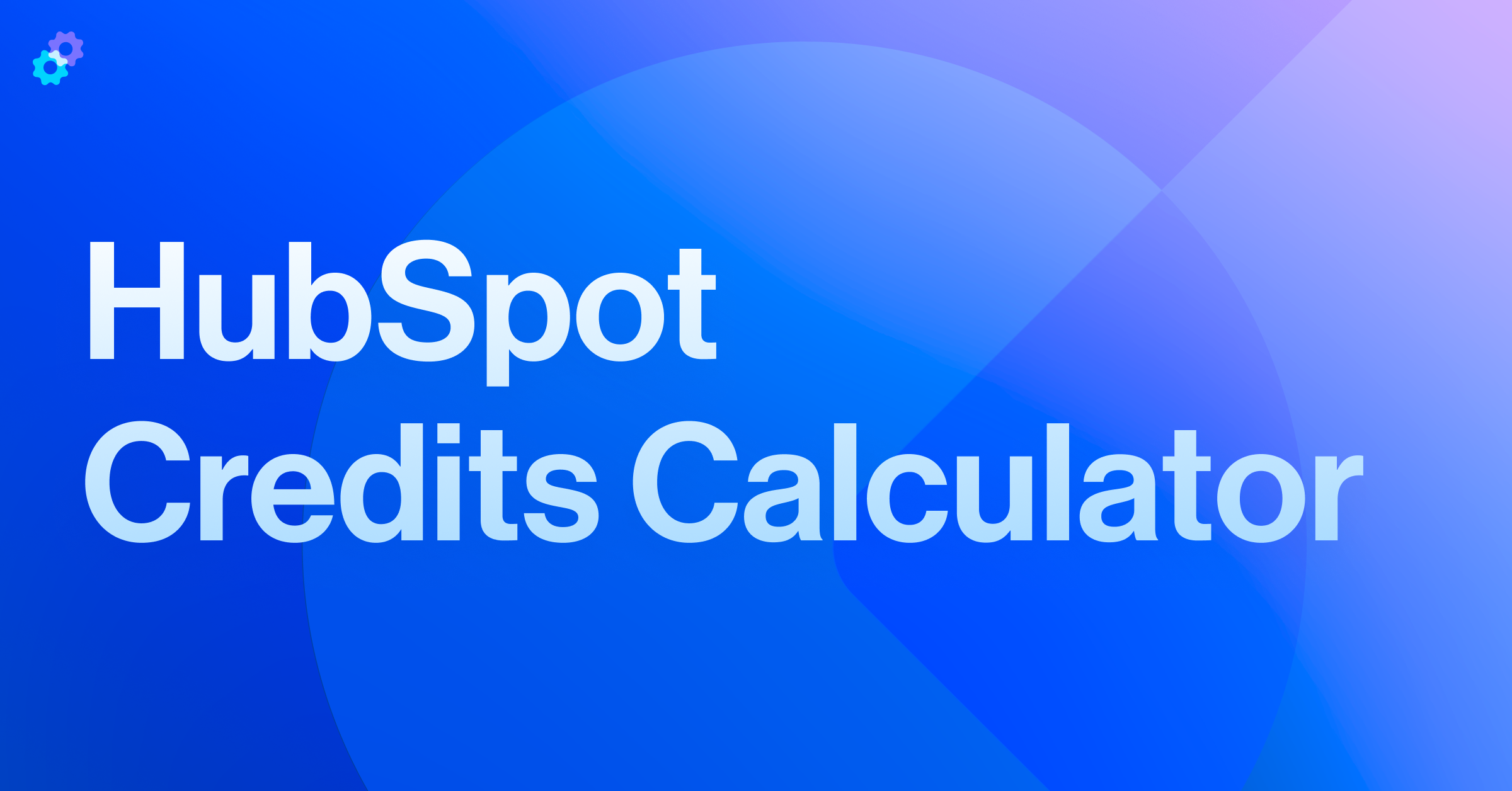One of the biggest announcements at INBOUND 2025 was the transformation of Operations Hub into Data Hub. This wasn’t just a simple rebrand; it was a repositioning of one of HubSpot’s most technical products into something more approachable, more powerful, and built for the AI era.
For GTM teams, this shift is a big deal. Data Hub makes it easier than ever to connect, clean, and enrich data across your tech stack, without needing a team of developers to make it work.
What Was Operations Hub?
Operations Hub launched as a suite of tools designed for ops managers, developers, and analysts to streamline data management and integrate fragmented systems. It aimed to unify apps, clean data, and automate business processes.
However, the Operations Hub often felt intimidating to non-technical users. Its core features were powerful but hard to use for some teams:
- Data Sync: Connects your third-party apps with bi-directional data flow.
- Programmable Automation: Allowed for the use of webhooks or custom code inside workflows to accomplish custom actions.
- Data Quality Automation: Automated the fixing of common formatting issues like name capitalization, mispelled emails, date or phone number formatting, etc.
- Data Quality Overview: Highlighted data problem areas across your CRM.
- Datasets: Provided advanced spreadsheet-like functionality for building custom reports.
While powerful, these tools were designed for more technical users. What they lacked was accessibility for average HubSpot users, as well as the AI that powers many of HubSpot’s other features.
What Is Data Hub and How Is It Different?
Data Hub builds upon the foundation of Operations Hub, expanding it into a central data platform for the entire business, not just operations teams.
Here are some of the key differences found in Data Hub compared to Operations Hub:
- Approachable: Designed so non-technical teams can actually use it.
- Unified datasets: Datasets aren’t used just for reporting; they can be used across the platform (Smart CRM, segments, campaigns, workflows, etc).
- Full-stack data access: Pull customer data from multiple sources such as apps, spreadsheets, and data warehouses.
- AI-first: Built to leverage Breeze AI to help you enrich your data and streamline business operations.
In short, Data Hub makes working with customer data easier and more intuitive for GTM teams. By simplifying access and activation, HubSpot is also moving closer to delivering a Customer Data Platform (CDP) experience natively inside the platform.
Key Features of Data Hub
Data Studio
Arguably one of the most impactful features of Data Hub, Data Studio enables the transformation of scattered data from multiple sources into actionable datasets through a familiar spreadsheet-style interface. Teams can integrate data from across their tech stack, including third-party apps, spreadsheets, and data warehouses, to create a single source of truth.
Why Data Studio matters:
Many users have been stuck in a cycle of manual exports, cleaning spreadsheets, and re-importing data into HubSpot. Valuable insights stayed locked in silos, and teams often had to lean on specialists to access data from other systems. Data Studio changes that by making data work simple and accessible for everyone.
Problems Data Studio solves:
- Limited AI performance: AI tools underperform when they lack a complete view of the customer. Data Studio ensures HubSpot’s AI tools can work with the whole picture.
- Manual data work: Automated connections replace hours of exporting and cleaning spreadsheets.
- Disconnected systems: Unified datasets break down silos, powering better reporting, segmentation, and personalization.
- Technical barriers: Users can combine and enrich data without needing technical expertise.
In short, Data Studio delivers on HubSpot’s unified data vision with an easy, intuitive interface. By transforming fragmented data into clean, enhanced datasets that flow throughout HubSpot, Data Studio makes unified data actionable, enabling GTM teams to work with complete, reliable customer information.
Data Quality
Data Quality ensures the information in your Smart CRM stays clean, reliable, and consistent. It continuously monitors your records for issues such as duplicates, outdated information, or formatting problems, and applies fixes automatically.
What’s new:
- AI-powered recommendations: The system doesn’t just fix obvious issues; it also suggests formatting rules based on patterns in your data, such as incorrect name fields or mispelled email addresses.
- Free Data Enrichment: Enrichment is now included natively, shedding the old Breeze Intelligence branding and removing the required HubSpot credit cost.
- Proactive monitoring: Instead of running manual cleanup projects, teams can trust that data hygiene is maintained in the background.
Data Warehouse Integrations
Data Hub expands HubSpot’s integrations with enterprise data warehouses, such as Snowflake and BigQuery. RevOps teams can bring data from product analytics or finance systems into HubSpot and just as easily send enriched HubSpot data back out for BI and analytics.
This creates a true two-way sync between your CRM and the rest of your tech stack, ensuring consistency across sales, marketing, and finance systems.
Data Sync
A key feature of both Operations Hub and Data Hub, Data Sync connects HubSpot to hundreds of apps with reliable, bi-directional syncing. The difference now is scale and usability: it’s faster, smarter, and more flexible, ensuring that marketing, sales, and operations teams always work with the same data, regardless of its origin.
Programmable Automation
For advanced workflows, Data Hub continues to support programmable automation within workflows. Developers can add custom code actions or webhooks, giving ops pros the ability to extend HubSpot in unique ways. It’s powerful yet approachable, enabling you to seamlessly integrate custom code with no-code automation within the same workflow.
Duplicate Management
Built-in deduplication scans for duplicate contacts, companies, and deals, then resolves them automatically or surfaces recommendations for review. This ensures HubSpot users aren’t wasting effort on redundant records.
Data Agent
While not exclusive to Data Hub, the new Data Agent helps generate insights and enhance records directly in HubSpot using:
- Smart Properties: AI-generated fields that populate with specific answers or insights, such as competitor information, intent signals, or details from call transcripts.
- Smart Actions: Custom actions that can be added to workflows, allowing the Data Agent to run enrichment or analysis automatically as part of a process.
- Smart Columns: In Data Studio, you can use AI to add new columns to datasets by pulling in research or analyzing existing data.
Along with the features above, Data Hub also includes secondary features such as:
- AI-Powered Data Formatting Recommendations
- Live Spreadsheet Integration
- Advanced imports
- Reverse ETL
- Datashare
Together, these features make it easier to enrich CRM records, surface insights, and streamline workflows without leaving HubSpot.
Why Is Data Hub So Impactful?
Data Hub brings HubSpot closer than ever to the holy grail of customer data management: a single source of truth for your entire tech stack.
- Unified Data for AI: Breeze Agents and Smart CRM get smarter when fueled by complete, accurate data from Data Studio.
- No Technical Barriers: GTM teams can combine and enrich data without writing code or hiring a data engineer.
- Personalization at Scale: With unified datasets, segmentation and personalization become more powerful and measurable.
- Always Up to Date: Automated syncing, enrichment, and cleaning eliminate the cycle of manual exports and imports.
- CDP-Like Experience Inside HubSpot: Instead of adding another tool to the stack, HubSpot customers now have a native way to combine, manage, and enrich customer data like a CDP.
For mid-market and enterprise teams, the impact is clear: fewer silos, less manual work, and more accurate data. The transition from Operations Hub to Data Hub is more than a rename. It’s a recognition that unified, AI-ready data is the foundation of a successful business.
Data Hub delivers the tools to connect, clean, and enrich customer information across your stack, without requiring technical expertise. It’s accessible enough for marketers, powerful enough for analysts, and strategic enough for RevOps leaders tasked with proving ROI.
Need help implementing Data Hub and cleaning your dirty data? Contact the Pros.







